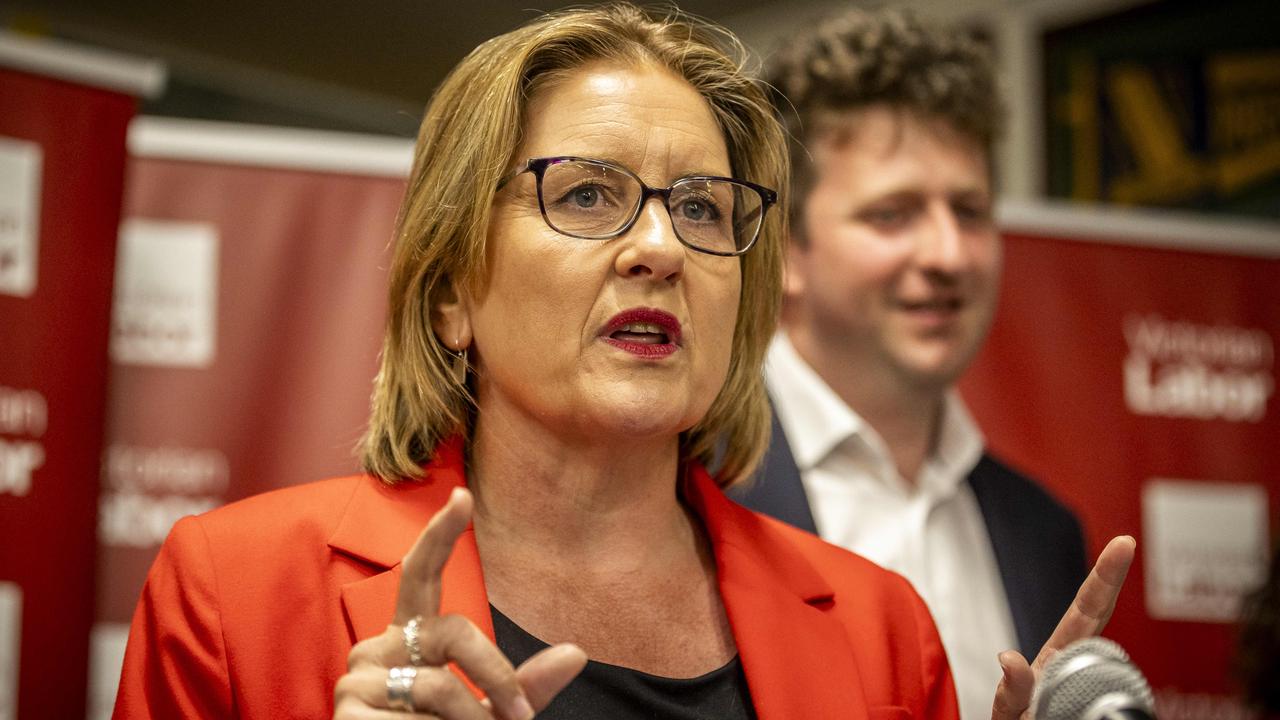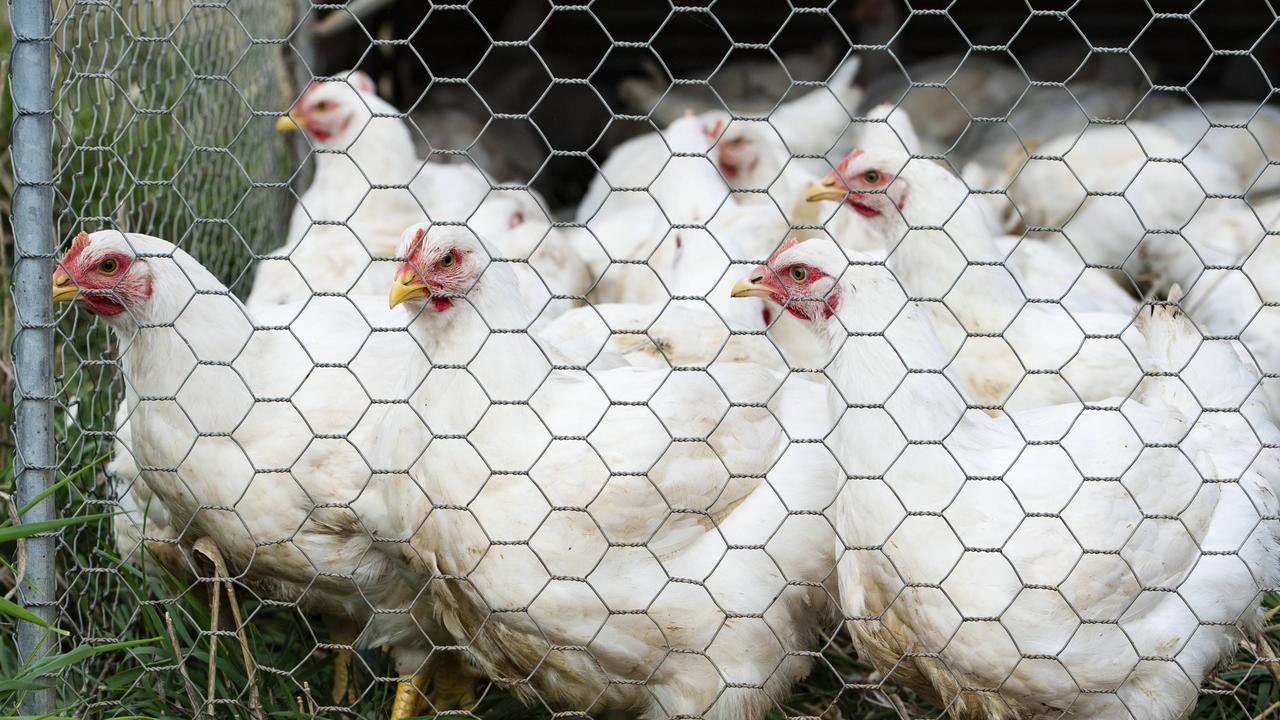Observers tip the gauge for a half century
Believe it or not there are 4600 people recording rainfall officially for the Bureau of Meteorology. See why these farmers have been doing it for decades.
Victoria
Don't miss out on the headlines from Victoria. Followed categories will be added to My News.
It’s a job to be done 365 days a year. There are no holidays, it’s outside work and it doesn’t matter if there’s rain, hail, snow or sunshine, you must start at 9 o’clock.
Dedication and commitment are essential but you don’t actually get paid.
Any takers?
Believe it or not, there are 4600 people across Australia that do this exclusive, groundhog day gig recording rainfall officially for the Bureau of Meteorology.
For some it’s a passion, a labour of love and an obsession taken very seriously, while for others it’s a mere public service or a chore they have inadvertently or unwittingly inherited.
The Bureau recognises the dedicated commitment of its long-serving volunteers by presenting them with excellence awards for 50 and 100 years of service.
TAKE IT OR LEAVE IT
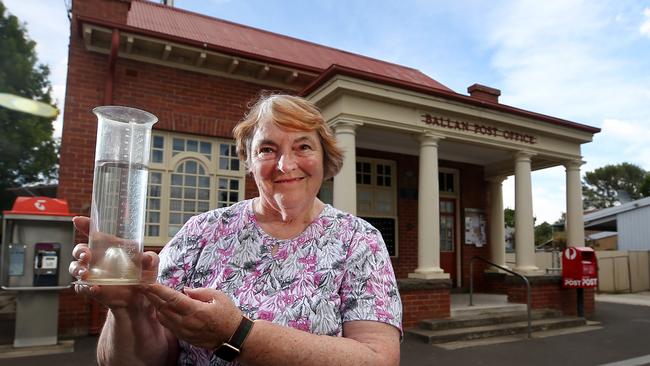
The job followed Merilyn Meadows even though she moved 300km away and tried her best to offload it to someone else by advertising in the paper multiple times.
Try as she might for almost 50 years, she couldn’t shake the obligation. Finally, at the end of last year, a successor was found and Merilyn retired.
“I’ve done it for 47 years and I said to the Bureau I think it’s time you found someone else,” she said.
“As a reward, they gave me the old rain gauge,” she laughed, adding it did have sentimental value with fond memories of times where it measured point scoring of a different kind during her kids’ backyard cricket matches.
Merilyn began taking volunteer rainfall readings in 1974 at the Katamatite Post Office after the job was transferred there following the closure of the local railway station.
In 1979 her and husband Ray moved to run the post office at Ballan, which also had an official gauge and hence the job continued for Merilyn, albeit far more constant being in a higher rainfall zone.
Merilyn had the chart on display for 28 years. Farmers in the area enjoyed comparing the figures to their own whenever they came in to pay a bill.
“I hoped when we sold the Post Office that the people who bought it would take on the rainfall but they didn’t and ten years ago we tried putting a note in the paper to see if anyone was interested but no one was so I kept doing it and doing it,” Merilyn said.
“Then recently we put another note in the paper and one woman said her son would like to do it. He took over on the first of January so I haven’t sent anything in since then.”
Despite feeling the burden of obligation at times, Merilyn says she quietly enjoyed recording the rainfall and would probably continue to check the gauge out of habit.
SOMEONE HAS TO DO IT
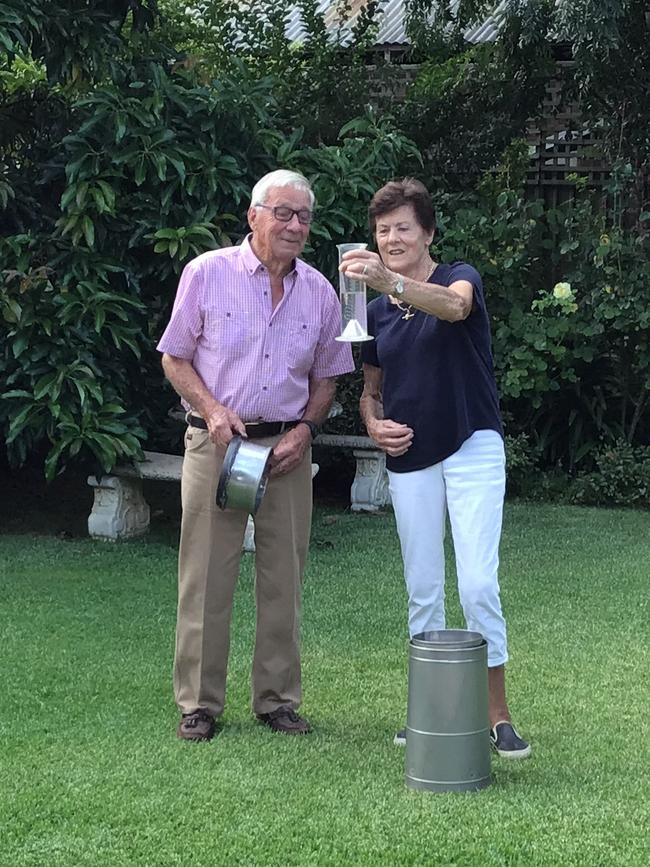
Eighty-four year old Peter Metcalfe and his family have been official recorders for almost 50 years and he says he’s “buggered if I know” why he continues to do it.
“A public service. Buggered if I know. It’s just another job and someone has to do it. This is how they (BOM) get their facts and figures,” Peter said.
The Metcalfe’s inherited the rainfall observation job after the family bought a property at The Rock, NSW, in 1954, where rainfall records had been kept since 1911.
When Peter and Sandra retired to Wagga 20 years ago the rainfall job followed them because the people who bought their property at The Rock declined to do it. The Metcalfe’s have been measuring rainfall at Gurwood Street in central Wagga for the Bureau ever since.
“We both do it but if it’s pouring rain at nine o’clock then it’s usually me that has to go out and check it,” Peter quipped.
After 60 years on the land, Peter says he is a climate change “sceptic”.
“Climate change alarmists should re-read the poems about Australia. It’s a land of drought and flooding rain,” he says, recalling a time in 1944 when just “918 points” (233mm) was recorded for the year.
“I remember that drought. It was just rabbits and blowing sand. Hard to imagine. It was just dreadful. You couldn’t see the mascot on the front of the car in the dust storms,” he said.
“Another time we got 10 inches in the middle of harvest. We were totally bogged down for weeks, we couldn’t move.
“So you get these patterns of three or four years of wet and dry. It changes. Has done it for all time.”
RECORD CONTEST
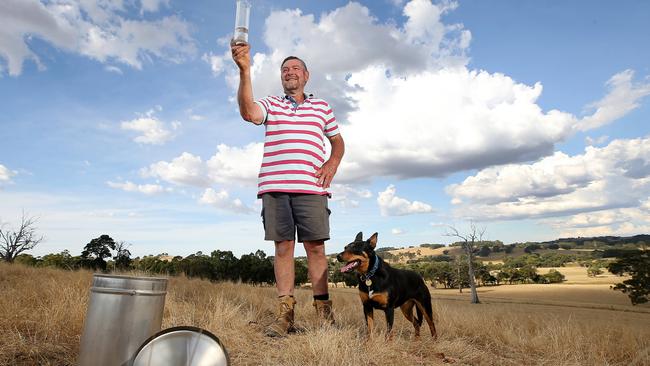
The Lade family at Highlands, north of Yea, has kept rainfall records on their farm since 1915 but didn’t officially collect it for the Bureau until 1973 as the job was hotly contested.
“My grandfather wanted to be the official recorder but the neighbour got in first,” Alistair Lade said. “Then my mother wanted to do it but my grandmother’s nephew got it after the other family so Mum did it from 1989 and I took over in 2011.”
Alistair’s interest in the weather runs deep. He meticulously graphs the data and uses it to help manage his 1000-hectare property running 10,000 Merinos and 500 head of cattle on the southern end of the Strathbogie Tablelands.
“I’ve put all the records on a spreadsheet and I do a rough analysis on autumn rain, spring rain and yearly rain to try and work out where the limiting seasons are,” Alistair said, adding that it was most unusual to have a month where they had no rain at all.
“In the last 100 years there has only been 10 occurrences where we haven’t had a single drop of rain in a month,” he said.
Alistair looks at his spreadsheets regularly to see if there are any trends and takes pride in the fact that soon his son will take on the official rainfall recording job, making it four generations of the Lade family to do it.
“It’s certainly something I don’t take for granted,” Alistair said.
“I enjoy doing it and feel it is a worthwhile contribution to get that bank of data for the statisticians to analyse.”
A LABOUR OF LOVE
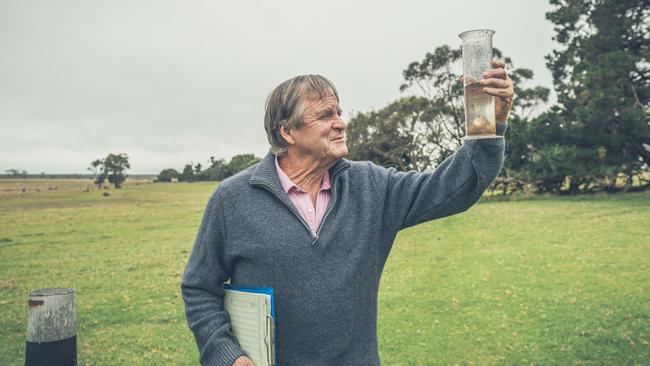
Gregor McNaughton has been measuring rainfall for the Bureau on the family’s Gippsland property at Seaspray for 52 years. His father recorded it for 23 years before that and the McNeilly family started it all off back in 1898.
Gregor has all the paper records dating back 124 years. Despite many official recorders now sending rainfall in electronically, Gregor still sends his monthly totals to the BOM via post, the old fashioned way.
Charts hang on the wall in his office and Gregor shuffles through neatly folded hand written records to compare years when chatting to The Weekly Times.
“It’s a labour of love,” Gregor said. “It’s something I really enjoy. I just continued it on. It’s not a duty. I’m not totally obsessed but I guess I am a little bit. I have all the daily records folded up here since 1947 in an envelope.”
The McNaughton property is 1600 hectares and has four gauges but the official one is at the house.
“The bottom of our property runs down to the coast 5km away and there is a rainfall variation of 100mm,” Gregor said.
“It is quite intriguing. There is less rain right on the coast and as you go inland it goes up and up.”
Heavily involved in local sport, Gregor has always been a regular go-to for teammates keen to know his forecast. Local agricultural show organisers too.
“It’s an obsession now. As you retire and your son takes over the property, it gives you something to do,” the seventy-six year old admits. “So many people call me to see how much rain we’ve had so there’s a social element to it.”
HALF A CENTURY NOT OUT
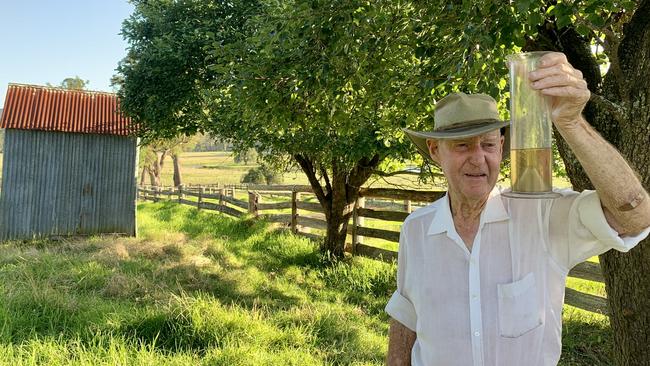
Robert Allan has the most southern farm in NSW at Timbilica and has been recording rainfall for the Bureau for 61 years but the family tradition dates back well over a century.
His grandmother first started measuring the rain 113 years ago in 1909, a year after the BOM began.
“When the Bureau first started they needed volunteer rainfall observers across Australia so they contacted all the post offices and we were a post office at Timbilica at the time so that’s how it started,” Robert said as he unfolded the frayed and yellowing but original letter sent to Lottie and John Allan in 1909.
“We have all the old rainfall sheets, every one, from 1909 right up until now.”
The 81 year old reels off facts and figures as he flicks through the weathered records, some sheets so timeworn that the edges crumble.
“In my 61 years I have recorded the wettest day and wettest month but only the second wettest year,” Robert says, adding the wettest year was 1952 with 1682mm. There were only two months where zero rainfall was recorded (Jan 1919 and Feb 1926).
When the gauges changed to metric in 1974, Robert admits “it took some getting used to”.
“The totals appeared to be lower because it was only a quarter of what we were used to. It’s roughly four points to one millimetre so say if we had 100 points, I’d only be writing 25mm. It didn’t seem quite right but I got used to it,” he said.
After checking the gauge at 9am every day for three quarters of his life, the ritual is part of Robert’s psyche. He likes that the rainfall is often a talking point and it regularly involves a healthy dose of local competition.
“It’s always nice to tip out a few millimetres more than your neighbours,” he grinned.
Originally published as Observers tip the gauge for a half century

